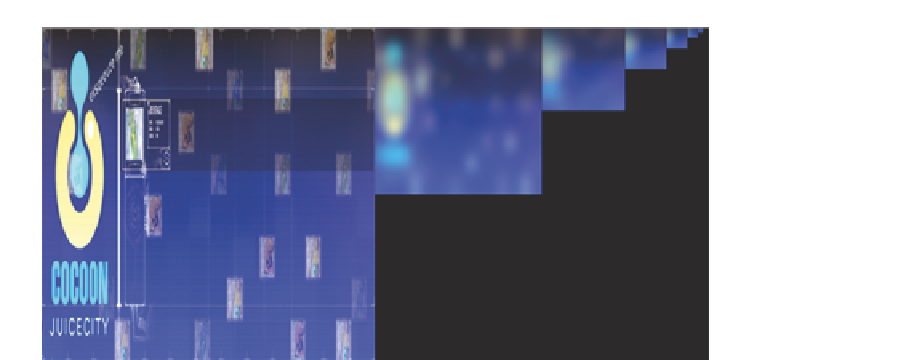Graphics Reference
In-Depth Information
Figure 1.25.
Pre-integrated specular integral of light card used with texture area lights.
It is also worth noting that sphere shape diffuse integral implementation can
be vastly simplified by analytically integrating the integral as it has a closed form
dependent only on the light position and radius. The sphere specular integral can
also be optimized by working exclusively with the solid angle differential. There
is no need to project computation into the light space, as the sphere shape is
easily defined in 3D. Also, the projected solid angle is equal to the solid angle, as
a sphere always subtends the same solid angle, independent of viewing direction
and orientation.
Nonuniform light source implementation.
We support texture-based lights using a
rectangle shape as the base. We apply reasoning from Section 1.3.5 to directly
compute and store pre-computed data in mip-maps of a 2D texture. Initial light
intensity is provided by the texture generated by the in-game impostor rendering
system or hand-painted by artists. Computed values are normalized and stored in
two compressed RGB8 format textures (see Figures 1.25 and 1.26). At runtime,
the rectangle light evaluates diffuse and specular integral, and multiplies the
result by pre-computed partial integral from textures indexed in a similar fashion
as described in Section 1.3.5
1.5 Results Discussion
Using area lights exclusively during the production of
Killzone: Shadow Fall
proved to be an important pillar of the physically based rendering pipeline. Due
to the proposed model, we were able to unify lighting incoming from different
sources—analytical or image based—keeping a similar response and quality. Our
art production pipeline was able to produce assets in a hermetic review environ-









